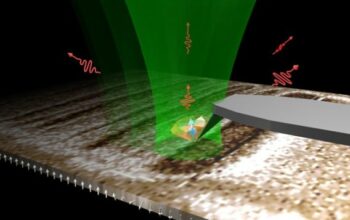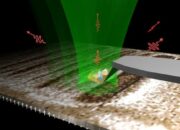Electro-optic modulators (EOMs) serve as pivotal components within the realm of photonics, providing a bridge between the electronic and photonic worlds. These devices manipulate the intensity, phase, frequency, or polarization of light waves, thereby facilitating advanced functionalities in various applications such as telecommunications, radar, and imaging systems. By leveraging electro-optic effects, EOMs encompass a rich tapestry of physics, engineering, and optical science. This exploration seeks to elucidate the operability, applications, and potential implications of EOMs in modern technology.
To appreciate the fundamental principles underlying EOMs, one must first grasp the electro-optic effect itself. At its core, the electro-optic effect denotes the phenomenon where the refractive index of a material is altered in response to an electric field. Two primary types of electro-optic effects dominate this landscape: the Pockels effect and the Kerr effect. The Pockels effect manifests in certain birefringent crystals, such as lithium niobate and potassium titanyl phosphate (KTP), which display a linear relationship between the applied electric field and the resultant index change. In contrast, the Kerr effect, which is prevalent in isotropic media, exhibits a quadratic relationship, leading to nonlinear changes in the refractive index.
The design and implementation of an EOM revolve around the advantageous properties of these electro-optic effects. Typically, an EOM consists of a waveguide or a crystal in which an electrical field is applied across electrodes. When a light beam traverses this medium, its properties are modulated depending on the configuration of the electric field. By tailoring the voltage applied, EOMs can produce various modalities of modulation, heralding a plethora of applications in data transmission and processing.
Among the most notable applications of electro-optic modulators lies in the realm of fiber-optic communication systems. EOMs are integral to generating and manipulating optical signals, enabling high-speed data transmission over extensive distances. The ability to modulate the phase and amplitude of light enables data encoding in a manner far more efficient than electrical signal processing alone. This characteristic positions EOMs at the forefront of innovations in telecommunications, particularly in the context of increasing bandwidth demands and the need for resilient communication infrastructure.
Moreover, when examining the implications of EOMs in quantum optics, one uncovers a fascinating intersection between classical photonics and quantum information science. Quantum communication protocols, such as quantum key distribution, leverage the precise control offered by EOMs in manipulating the polarization states of photons. This precision is essential for ensuring the security and integrity of quantum communications, thus enabling a new paradigm in secure information exchange.
The diverse array of potential applications extends into imaging systems as well. EOMs can enhance imaging resolution and contrast in optical microscopy and other imaging modalities. By modulating light in synchronization with the imaging process, EOMs contribute to dynamic imaging techniques that capture transient phenomena in biological and material sciences alike. The capability to tailor illumination enhances the contrast and specificity of imaging without the need for extensive modifications to existing systems.
Another area of growing interest lies in the integration of EOMs in sensor technologies. Electro-optic modulators provide a means to realize sensitive optical sensors that can detect minute changes in environmental conditions, such as temperature, pressure, or light intensity. This capability is particularly advantageous in fields such as environmental monitoring and biomedical diagnostics, where precision and reliability are paramount.
Despite the multifaceted advantages and broad applicability of EOMs, challenges remain in optimizing their performance for specific applications. For instance, while EOMs offer remarkable modulation speeds, their operation is often constrained by factors such as bandwidth limitations, insertion loss, and thermal effects. Additionally, the materials and configurations employed in EOM design necessitate careful consideration to maximize efficiency and minimize signal degradation.
The ongoing miniaturization of photonic components heralds an exciting future for electro-optic modulators. Advances in materials science, coupled with integrated photonics approaches, promise to yield EOMs that are not only optimized for performance but also compact and energy-efficient. Such innovations could facilitate the development of next-generation optical circuits and quantum devices, potentially revolutionizing fields ranging from telecommunications to biomedical applications.
In summation, electro-optic modulators exemplify a confluence of science and engineering, standing at the vanguard of optical technology advancements. Their ability to precisely modulate light paves the way for myriad applications across communications, imaging, and sensing domains. As research continues to unravel the intricacies of electro-optic phenomena and their integration into compact systems, one can anticipate a profound transformation in how we utilize and perceive the interrelation between electronics and photonics. The unfolding narrative of EOMs promises not only technological advancements but invites curiosity into new frontiers of knowledge and application in the evolving landscape of modern science.










